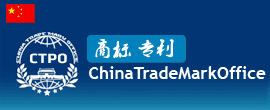The Standing Committee of National People’s Congress adopted an amendment to Trademark Law that further facilitate trademark applications, safeguard a fair competitive market order and strengthen protections to exclusive trademark rights.
In the morning of August 30, the highly concerned amendment to Trademark Law was adopted at the 4th session of the Standing Committee of the twelfth National People’s Congress.
China’s Trademark Law was adopted in 1982 and previous two amendments were made in 1993 and 2001. It was the first intellectual property law of China after the reform and opening-up. Since 2003, SAIC entrusted by the State Council has taken the detailed preparations for the third amendment. It took nearly six years in making deep researches, collecting wide opinions, studying experts’ suggestions, modifying repeatedly to form a draft amendment and submit to the State Council for review on September 18 2009. On October 31 2012, executive meeting of the State Council discussed and approved the draft amendment and then submit it to the standing committee of NPC for three round reviews.
Official from SAIC expressed that current Trademark Law was a milestone in the development of China’s IP legal system, which strongly promoted the boom of trademark industry, effectively safeguard a fair competitive market order since its implementation thirty years ago and greatly improved China’s trademark registration, administration and protection. By the end of 2012, China’s accumulative trademark application volume, accumulative registration volume and registration still in force were respectively 11.36 million, 7.656 million and 6.4 million, which all ranked world top. However, accompanied with the development of socialistic market economy, some content of the law was hard to meet practical needs, which mainly reflected in the complicated registration procedure, the lengthy registration period, the large number of malicious registration and the ineffective curd to trademark infringements.
The new amendment mainly focused on three aspects:
I. Multiple measures to facilitate trademark registrations.
It provides the sound can be registered as trademark, accepts multi-class applications, opens online applications, provides a procedure for communication between trademark examiner and the applicant, stipulated legal time limits to trademark examination and review, restructures opposition procedure which limits the opponent of prior right cases from any entity to prior right owner of interested party, and when opposition is not supported and the opposed mark is directly approved for registration by Trademark Office.
II. Further safeguard the fair and competitive market order.
It provides only Trademark Office, Trademark Review and Adjudication Board, and People’s Court can determine well-known trademarks in the processing of specific cases. It clearly prohibits the use of well-known trademarks in advertisements, promotions, exhibitions and other commercial activities. It provides the use of well-known trademarks, registered marks as trade names to mislead the public is unfair competition. It clearly prohibits the malicious registration of marks prior used by others due to business transactions and other relations. It provides trademark holder’s failure to prove actual use of previous three years, the infringer holds no liability. It adds legal liabilities to trademark agencies and requires them to keep clients’ commercial secrets, prohibits agencies acting malicious applications, registering other marks beyond its power.
III. Strengthen protections to exclusive trademark rights.
It clearly defined the intended providing convenience to facilitate other entity’s infringement to exclusive trademark rights is a tort behavior. It increases fines to trademark infringement and increases legal circumstances for heavier punishment. Those committed twice or more of trademark infringement within five years of time, or having other serious infringing circumstances must be given a heavier punishment. It provides a punitive damage to malicious infringement of trademark rights in serious cases. It adds a conditional reversion of burden of proof when infringement is established and the court needs to decide on the amount of damages, provided the right owner has exhausted all methods of proof, and the evidence of infringement is mainly in the infringing party’s control, the court may order the latter to raise relevant evidence. It also increases the amount of statutory damages from current RMB 500,000 to RMB 3 million.

